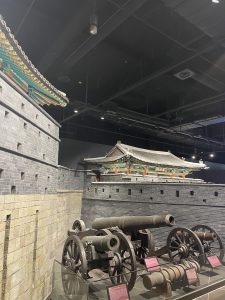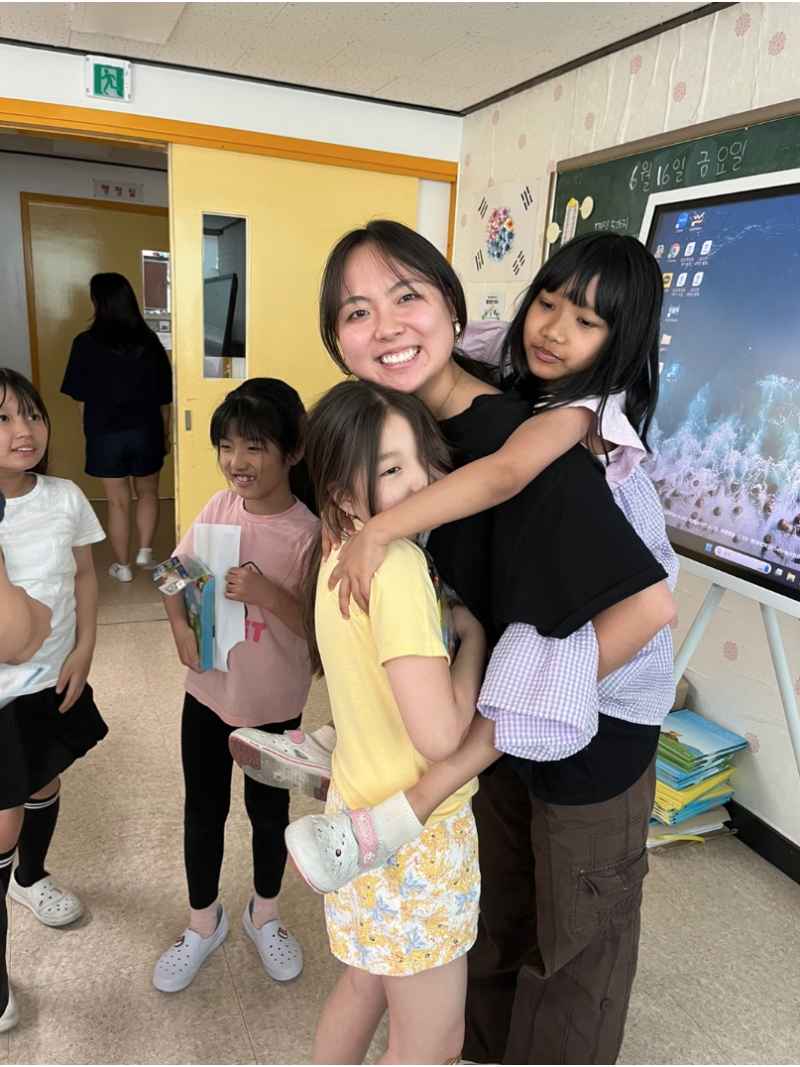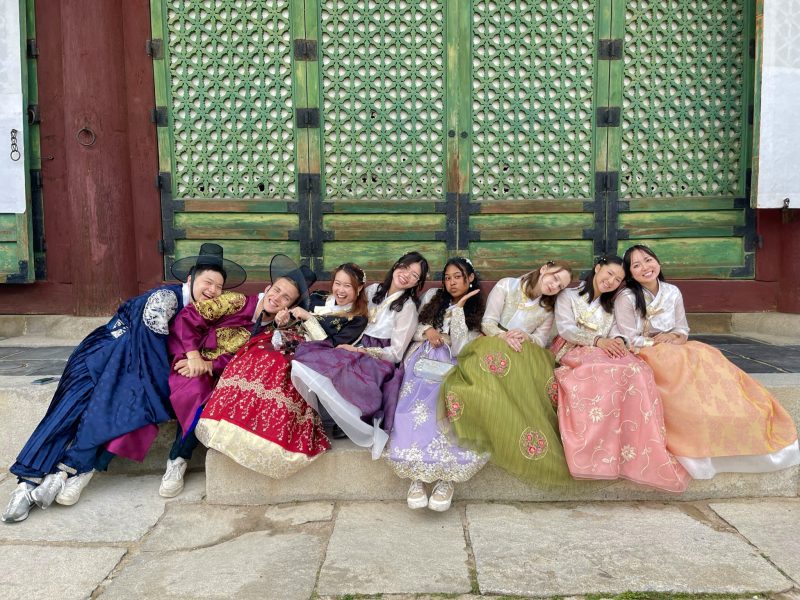The War Memorial of Korea presents a specific narrative of war in relation to the Korean people, which is detailed through the museum’s intentional architectural design choices. The first glaringly obvious thing I took note of was the huge scale of the museum. Prior to entering the building, visitors are greeted by a tall monolithic structure, flanked by larger-than-life statues of soldiers and civilians caught in the midst of battle. Additionally, there is a long walkway leading up to the building, opening up into a large, circular plaza. Immediately, these architectural elements make visitors feel small and overwhelm them with a sense of awe and anticipation for whatever is in the main building itself. Much of the interior is made up of polished stone, giving the space a clean, modern feel. However, the Memorial Hall stands out as it is framed by a rusty, traditional gate, looking out of place and out of time. The hall is completely shrouded in darkness, with only fake candles, projected stars, and light from the main lobby illuminating it. There is a lot of imagery of the natural world; the celestial bodies in the hall represent and honor those who have passed on, while the heavy use of stone, gravel, and water in the room at the end of the hall represent the people who are still alive, bound to earth.
What surprised me was the fact that the memorial was not simply about the Korean War, but rather every past battle that the Korean people had fought throughout history; there were exhibits with artifacts reaching all the way back to the Paleolithic Period. The museum thus defines war as a multitude of conflicts, mostly between Korea and outsiders, that make the peninsula and its people what they are today. They are claiming their history and presenting images of their identity from before the war that we now define them by.
I noticed that the use of negative space was also intentional; some areas are large and spacious, making you feel small and weak, while others are narrow and make you feel trapped. Complex, life-like recreations of buildings, weapons, battles, and people serve as reminders of the country’s power, which intimidate outsiders while evoking a sense of pride in Korean citizens. The exhibitions about the Korean War in particular were quite dramatic; immediately upon entering, you are greeted with darkness and an imposing film, and the next room makes significant use of the color red as they talk about China and the USSR. In contrast with the displays of power from battles further back in history, these exhibits also portray weakness, fear, struggle, and pain. Models of scenes from the war and the people who fought in it allow us to view the conflict on a smaller, individual scale, humanizing those involved in the conflict and providing opportunities for empathy.
One woman I passed by (who was likely American) commented that everything in the exhibit “was a lie.” I believe that, although lot of information was not translated into English, meaning that details were omitted and some statements were exaggerated, the information that is conveyed is not necessarily a lie. An opposing perspective is simply a different kind of truth rooted in emotions and experiences we don’t understand. People who visit the museum with this mindset that it serves to challenge foreign perspectives and advertise propaganda are the ones who keep divisions alive, maintaining in-group/out-group beliefs. Why be so set on stirring up conflict when we can instead use this experience as an opportunity to gain more empathy? Overall, the memorial presented a fascinating lens to view the country through, specifically in terms of the violent conflicts that contributed to modern South Korea.
~ Jeanie Jia








